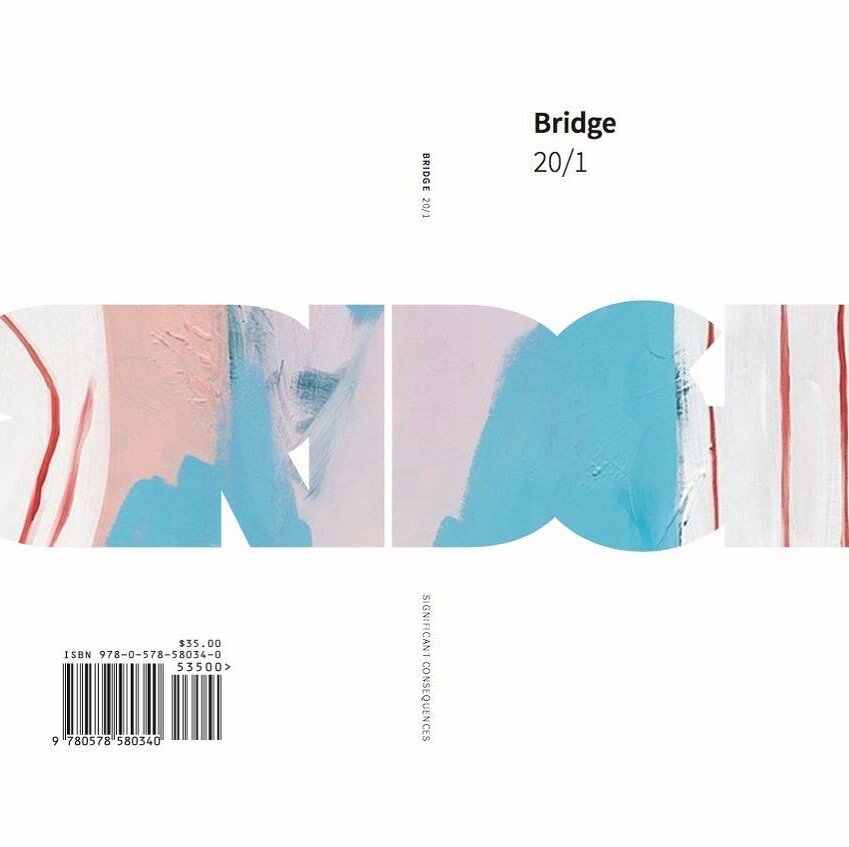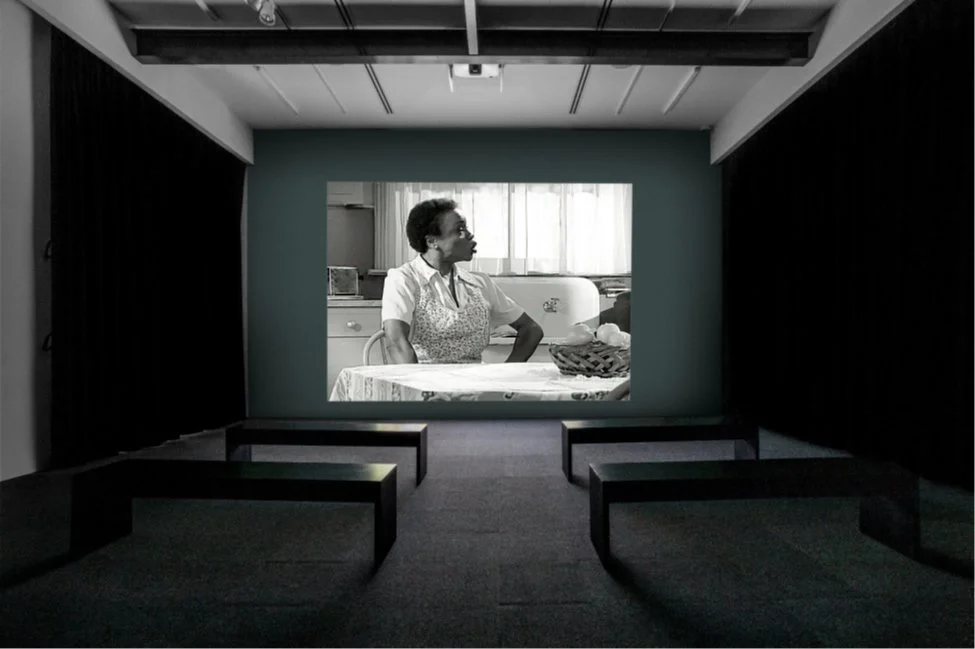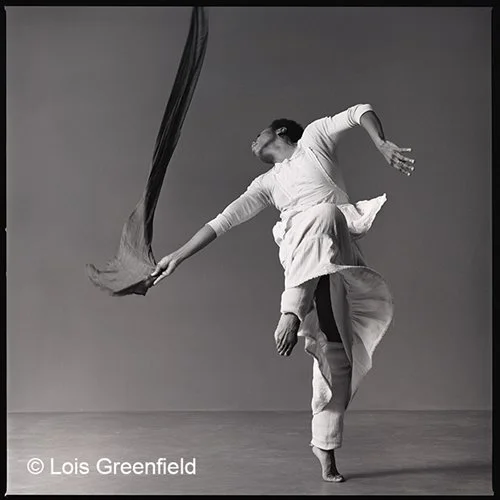REVIEW: A Rare Glimpse of That Single Fleeting Moment, “Blondell Cummings: Dance as Moving Pictures” at the Chicago Cultural Center
Installation view, Blondell Cummings: Dance as Moving Pictures at Art + Practice. Image courtesy the Chicago Cultural Center / DCASE.
REVIEW
Blondell Cummings: Dance as Moving Pictures
June 7—July 27, 2025
Chicago Cultural Center
Sidney R. Yates Gallery
78 E. Washington St.
Chicago, IL 60602
By Michelle Kranicke
Merce Cunningham famously said, “You have to love dancing to stick to it. It gives you nothing back, no manuscripts to store away, no paintings to show on walls and maybe hang in museums, no poems to be printed and sold, nothing but that single fleeting moment when you feel alive.” This ephemerality also means that tracking dance’s history, especially before the advent of the iPhone, can be a Herculean task. For the average choreographer and performer with no access to academic resources, just trying to educate oneself about the art form’s history and some of its historical figures that are not easily accessed or even represented on the internet, is daunting. That is why the recent exhibition at the Cultural Center: Blondell Cummings: Dance as Moving Pictures (originally co-organized by Art + Practice and the Getty Research Institute) and organized here in Chicago by Elise Butterfield, Curator of Exhibitions at DCASE, was such a gift. The event showcased Blondell Cummings’ independent work in movement and video. Cummings, a student of dance, photography and film grappled with ideas of how movement, a 3-dimensional live art form could also be as powerful in a 2-dimensional medium. Her early studies searched for that place of compromise wherein the best of both methods were able to surface and the energy of the body and the details of the dancing would leap off the screen.
The exhibition took place in one large space in the vast Yates Gallery on the 4th floor. Small videos were set up along the perimeter walls while two longer films were projected on two large partitions located more towards the center of the gallery. Each of the larger (and longer works) could be viewed on benches set about 8-10 feet back from the projections. In a sense the exhibition was orchestrated like a dance. Cummings’ seminal works, Chicken Soup and The Ladies and Me, dominated the room while additional sections of Food for Thought, the work Women in the Dunes, and early experimental film studies of Cummings dancing were positioned around the edge of the gallery in a variety of formats ranging from monitors placed on pedestals to small screens anchored to the wall. One particular film study of Cummings dancing outside in nature while simultaneously directing and questioning the videographer showcased her dueling interests of not only how to uniquely capture the body on film but also her more open-ended interest into the process of making and rendering movement as narrative. Visitors could choose to move from the large videos to the smaller ones, jumping across the room from one screen to another, or direct their visit chronologically as one might in a retrospective.
The architectural configuration and the darkened atmosphere made the exhibition feel theatrically presentational while giving space to each dance. Watching Cummings perform her solo, Chicken Soup, on a large wall offered a rare chance to feel immersed in her artistry. Her ability to expertly and exquisitely move from concrete to abstract to concrete movement and back again should be de rigueur viewing for any young dance artist studying improvisation with ideas of using that particular element of dance as their primary form of movement communication. Even the substandard 1980’s video quality could not diminish the mastery of the work and Cummings’ ability to transcribe everyday activities into transcendent movement; a testament to her understanding of videotaped dancing and her ability as a performer to reach through the screen and pull the viewer in.
Image left: Blondell Cummings, photography by Lois Greenfield. Image courtesy the Chicago Cultural Center / DCASE.
The one problem with all of the videos existing in the same cavernous space was the sound bleed between the two longer videos, Chicken Soup and The Ladies and Me. On the first day I visited I was the only one in the gallery and it gave me the opportunity to really concentrate on the sound score. When I returned there were several other viewers present and it was exponentially more difficult due to the quiet conversations already adding to the audio bleed.
While the exhibition was exceptional, especially for the fact that it assembled so many video works not usually seen by a dance artist who greatly influenced the experimental dance scene, I would have appreciated a fuller retrospective. Blondell Cummings was a founding member of Meredith Monk’s The House, she was in one of Yvonne Rainer’s films, and worked with many other influential New York downtown dance artists. While it was thrilling to see the videos works displayed I am left wondering why the exhibition did not cover the full breadth of her career? In addition, the exhibition also took place during the summer when colleges and universities are on break. Students of dance and performance have missed an opportunity to view one of the foremost post-modern dance artists and, as mentioned above—dance as an ephemeral form—often has woefully few opportunities to have its historical films on view for younger generations to watch and learn from. I hope this is not a one-off but rather the beginning of more curated events at the Cultural Center focusing on dance. The archive of dance, and those choreographers and dancers that are responsible for some of the historically significant foundational aesthetics upon which the form itself continues to build, deserve to have their work seen. Institutions curating such exhibitions of historical video and film can help build a foundation wherein even though there may be nothing to hang on walls or store away, at least there is the opportunity for younger generations and people who did not see a work live to experience that single fleeting moment of being alive.
Michelle Kranicke is the founder and director of Zephyr, co-director of SITE/less performance gallery and the Dance section editor for Bridge.
Like what you’re reading? Consider donating a few dollars to our writer’s fund and help us keep publishing every Monday.




